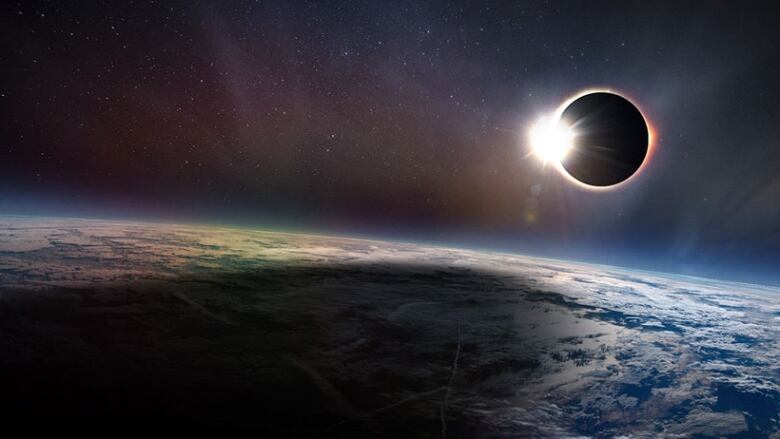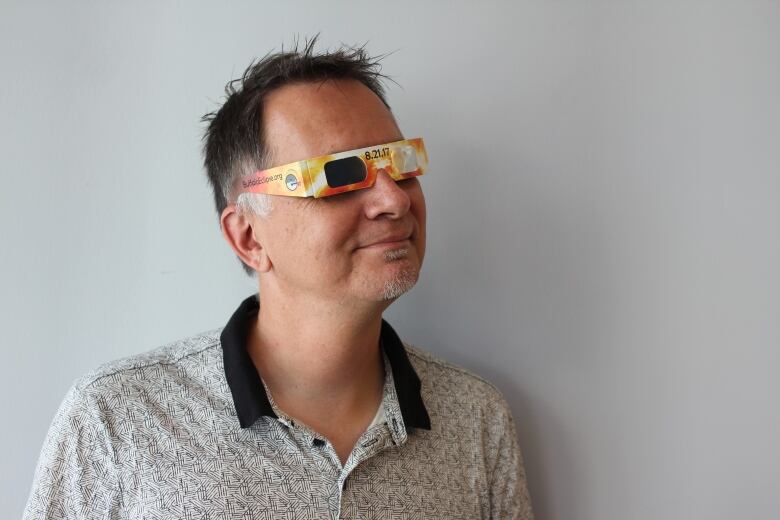How to safely watch the the solar eclipse
A how-to guide about the August 21 solar eclipse

With excitement leading up to the August 21 solar eclipse, people across North America are preparing to watch the event.
In this region, the partial eclipse on Monday will start around 1:40 p.m. and the maximum partial eclipse will be at 2:32 p.m. It will end by 3:50 p.m.
But in order to take it all in, there are a number of safety precautions one has to take before trying to catch a glimpse of the eclipse.
- How and where you can watch the solar eclipse on Aug. 21
- Solar eclipse myth-busting: Facts and fiction behind nature's stunning event
- Solar eclipse 2017: CBC coverage
"We just happen to live in this crazy geometric way that the earth, the moon and the sun are at just the right distance," he said. "It's very unique in our solar system and maybe unique in our galaxy." The last time there was a total solar eclipse in Canada was 1979, said Frank Seglenieks, and he remembers it well.
"They made everybody sit in the gymnasium," the coordinator for the University of Waterloo's Weather Centre told CBC.
"They wouldn't let us outside."
And while being outdoors is safe during an eclipse, there area number of dos and don'tswhen it comes to making the most of this solar event.
Don't look without proper protection
The only safe time to view an eclipse with your eyes is during 'totality:'the moment when the moon entirely covers the sun.
The arc of this year's eclipse passes through the United States, which means that for Canada, the eclipse won't be a full one.
In southern Ontario"it's going to be about 80 per cent, [or]85," saidSeglenieks, who's driving to Tennessee in order to be inthe path of totality to view the eclipse. Farther north, the sun will remain even more visible.

"Back in the1990s, there were a lot of people trying to use various things likealuminizedMylargardening film, and CDs," RalphChou, a University of Waterloo optometry professor and president of the Royal Astronomical Society of Canada told CBC News.
"I did to the testing on them and found that most of those products aren't safe at all."
While not immediately felt, damage from the sun can affect your vision just hours later, andChoucautions Canadians to use protection when viewing the event.
Do check the weather
Seglenieks said that a major factor in viewing the eclipse isthe weather and clouds. Although even under cloud cover, it is not safe to view an eclipse with the naked eye.
He suggests using sites like Capital Weather Gang, which classifies different regions in North America based on cloud cover.
He will be checking the forecast leading up to Monday, to make the most of the event.
Do use official eclipse glasses
Eclipse glasses are specially designed to block 99.9999 per cent of sunlight, making them ideal for viewing the eclipse but not much else.
For those hoping to save a few dollars, beware: regular sunglasses and sun-filtering devices will simply not do the job.

Many organizations and businesses are selling eclipse glasses leading up to the eclipse, and some are even giving them away. But some counterfeit glasses have been caught on Amazon, so be sure to get the real thing.
- Vancouver realtor pulls plan to give eclipse glasses over fears they're fake
- 1,000 solar eclipse glasses from Guelph libraries snapped up in a day
The most important thing is to ensure any pair of glasses are scratch-free and ISO certified, reports NASA, with the international safety standard "ISO 12312-2" on the label.
Do think 'inside the box'
One of the best options for viewing the eclipse is a pinhole camera, which can be made at home quite easily.
But that's about your only DIY option.













_(720p).jpg)


 OFFICIAL HD MUSIC VIDEO.jpg)
.jpg)



























































































